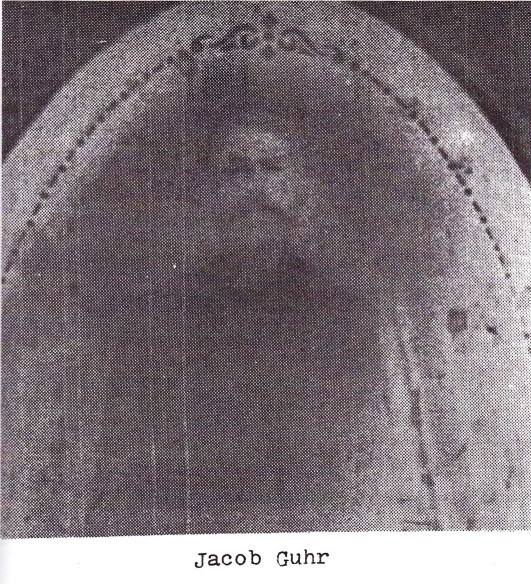Part 1 – Guhr and Kopper History
Chapter 1 – Where Do We Find Our Family Names in Mennonite History?
The article, “Mennonite Settlements in Central Poland,” by Erich L. Ratzlaff (see the web link) provides historical facts about the development of the Mennonite communities in which our family names appear. Mr. Ratzlaff also cites other sources, including the Mennonitisches Lexikon, to give us a more complete picture of these developments. Here are main points from the article:
- Mennonite merchants from Danzig, Elbing, and Marienburg probably started these settlements along the “Great Road” which were about a day’s journey apart by horses: Marienwerder; Kulm; Obernessau at Thorn; Neudorf at Brest; Wymyschle at Plock; Kasun near Warsaw; and the Sachsenkempe in Warsaw. (p. 24)
- In the Mennonitisches Lexikon,” we find confirmation that Mennonites traveled up the Vistula River beyond the Schwetz-Kulm lowland and settled in Deutsch-Wymyschle and Deutsch-Kazun around 1750.
- Leo Ewert, the last elder of the church in Deutsch-Kazun, began to write a record of the congregation, which he says was founded in 1762, but did not receive permission to build a house of prayer until 1823.
- In 1776, Mennonite families from the villages of Montau, Schoensee, Przechowka and Obernessau moved up the Vistula and formed the community of Deutsch-Kazun at Modlin.
- Mennonites first leased the land from the king for four years, between 1758 and 1762. The names of some of the first settlers were Bartel, Schroeder, Guhr, Ewert, Jantz, Stobbe, Klaus, Koppert, Koohnert, and Plennert. (p. 29)
- They then together bought 1,600 Polish Morgens of land. Elder Leo Ewert saw the deed of sale signed by Bartel, Kohnert, Schroeder, Klaus and Dauter, with the land divided between twenty-three families.
- Subsequently, because the land was not large enough for the settlers, and when Poland land fell into Russian hand, the opportunity to buy more land occurred. “At the third Partition of Poland in 1795, Warsaw and the surrounding area came under Prussian rule. A small estate northwest of Kazun belonged to the Russian General Markow. He found it advantageous to sell his estate to the Mennonites. In 1798, three years after the third partition of Poland, the Mennonites Franz Bartel, Heinrich Schroeder, Salomon Konnert, Cornelius Foth, Jakob Ewert, Heinrich Bartel, Jakob Matis, and a certain Guhr bought this estate, called Markowczysna. Soon after, at the beginning of the 19th century, the Czosnow estate, 3 kilometers southeast of Kazun became available. The land was higher, therefore protected from floods and consisted of soil suitable for wheat. General Czosnow sold the land to Franz Bartel, Johann Jantz, Gerhard Nickel, David Schroeder, Heinrich Ewert and Jakob Foth. Later, David Buller, Georg Nickel, Heinrich Kliewer, Cornelius Kasper, Wilhelm Lehrmann, Cornelius Baltzer, Gerhard Koppert and Albert Vogel lived in this village. In 1803, the neighboring Czastkow was sold. Half of the estate was bought by the Mennonites who established the village Deutsch-Czastkow. It was good, flat country, and it wasn’t located in the flood plain of the Vistula. The buyers were Heinrich Guhr, Jakob Bartel, Peter Frantz, Kornelius Goertz, Heinrich Nickel, Peter Korber. Later, Peter Wohlgemuth, David Nachtigall, Peter Bartel, Cornelius Baltzer, Heinrich Bartel, Peter Schroeder, Kornelius Plennert and Peter Ewert lived there.” (p. 30)
- In the article, Mr. Ratzlaff refers to P.M. Friesen’s writing in Polish literature. Friesen says that the Mennonites under Polish rule suffered for their faith, but were defended by the nobles, kings, and cities. The letters of protection and privileges stated “that the Mennonites must be protected because they were useful people, the ancestors of the kings had invited them from the Netherlands and used them to build the Werder.” (p. 27) Under later German and Russian rule, that changed drastically; Mennonites were given a heavy toll tax, men were forcefully conscripted for military duty, and they were limited in purchasing new land. (p. 27)
- Small groups of Mennonites purchased property from Lutheran settlers in the neighboring villages of Grochaly, Malowies, NeuhoferKampe, CzosnowerKampe, Neuhof, Montau, Szamocin, Ozarow, Januszew, Elsenbruch (Olsynek), Targowek, Tomaszew, Josefow, Marcelin and Gluske.
- “The following names were found in the Mennonite community of Deutsch-Kazun: Adrian, Albrecht, Baltzer, Bartel, Block, Buller, Dirks, Ediger, Eckert, Ewert, Flaming, Foth, Frantz, Funk, Gedert, Goede, Goertz, Guhr, Harn, Harm, Jantz, Kasper, Kerber, Ketler, Klaus, Kliewer, Knels, Koehn, Kolmert, Koppert, Lehrmann, Matis, Nachtigall, Neumann, Nickel, Pauls, Penner, Peters, Petker, Plennert, Ratzlaff, Regier, Rosenfeld, Schmidt, Schroeder, Siebert, Stubbe, Tjahrt, Unruh, Vogel, Vogt, Willms, Wohlgemuth, Zimmermann.” (p. 32)
- The community of Deutsch-Kazun expanded under Prussian control, after the third Polish partition. (p. 32)
- The church was known to be Frisian, not “Old Flemish” at the beginning. A Peter Goertz from Malowies served as one of the preachers, from 1812-1867, when he moved to Russia.
Link to Erich Ratzlaff article: https://www.mharchives.ca/wp-content/uploads/2021/11/lmWeichselbogenRatzlaffGHPprofedFinal-reduced-6.pdf


